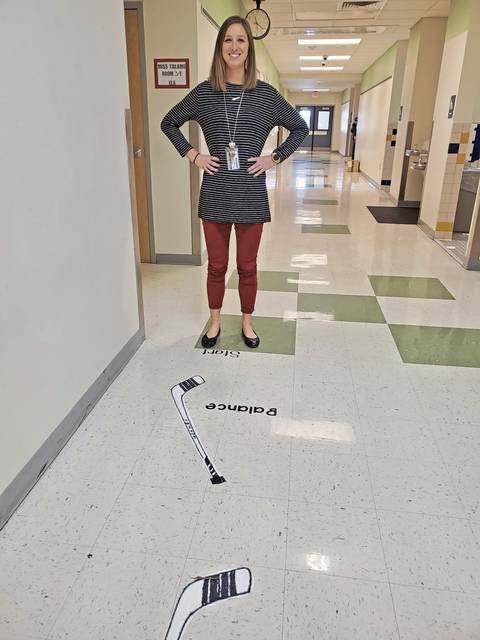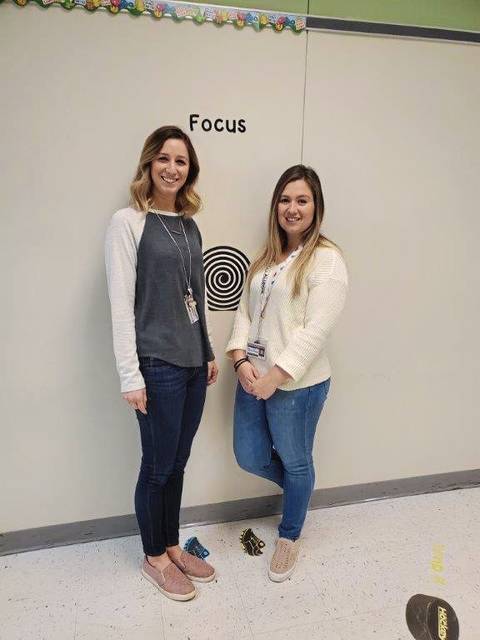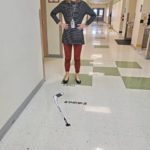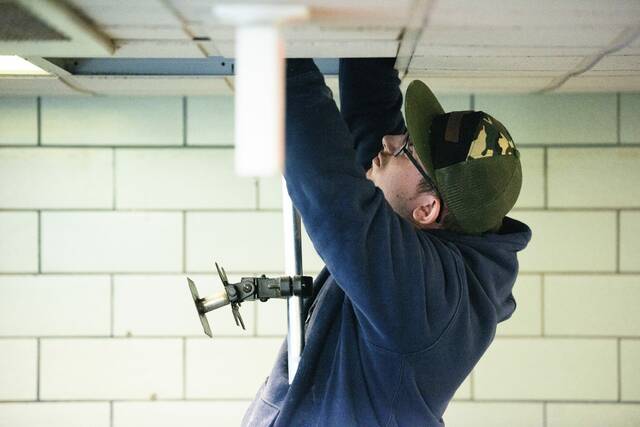Kolton Kamauf walked through Norwin’s Hahntown Elementary School in North Huntingdon, where paintings and stickers on the hall floors and walls prompt him and other students to crab walk, touch images and do wall push-ups.
”I like it because it gives my brain a break and it relaxes me,” said the 9-year-old Kamauf, a fourth-grader from Irwin.
The sensory hallways — one on the first floor and the other on the second floor — were created over the summer by Katelyn Gigliotti, a K-4 learning support teacher, and Alyssa Rittenhouse, an occupational therapist assigned to several elementary schools and Hillcrest Intermediate School.
They received permission and support from Lisa Willig, the Hahntown Elementary principal, who assisted with the project, Gigliotti said.
All students, not just ones with athletic ability, can participate Gigliotti said. The students can do the quick activities during recess or while just walking through the hallways.
“It gives them a quick (one minute) mental break through the day,” Gigliotti said.
The activities are at different heights and require students to alter the pressure they place on the wall with their hands, Gigliotti said.
The sensory hallway on the first floor, where the younger students have their homerooms, has crab stickers on the floor to encourage crab walks and pawprints to encourage bear walks, hopscotch, a set of letters to jump through, balance beams made of tape and a visual maze on the wall, Rittenhouse said.
The second floor, where students in grades two, three, and four have their classrooms, has hockey stick stickers to balance on and footballs to hop through. Both floors have a wall push-up station.
“The sensory hallways incorporate activities often used by occupational therapists that can help students organize all of the sensory input they receive throughout out the day and channel it in a functional way for learning.”
Research has shown that students who are more active “have better focus, faster cognitive processing and more successful memory retention than students who spend the day sitting still,” Gigliotti said.
Noting that the elementary students “really have that need to move,” Rittenhouse said that “hopefully, this helps them sit when they need to sit.”
Gigliotti said she often works with Rittenhouse to help students who have a ‘need to move’ and learn better when they have plenty of opportunities for movement.
“The kids make it work for them,” Willig said.
Sensory hallways also were created over the past summer throughout Stewartsville Elementary School, said April Preisach, Stewartsville’s principal.
Each sensory path has a theme with suggested activities, Preisach said.
“The butterfly-themed sensory path encourages students to practice letters and numbers while taking a break,” Preisach said.
Students practice following directions while at the hopscotch and ladder sensory path and directional maze.
Students can be found using them at various times throughout the day. Some will ask to use it while others have it built into their schedule.
“All sensory paths encourage movement and give students the opportunity to regroup,” Preisach said.













